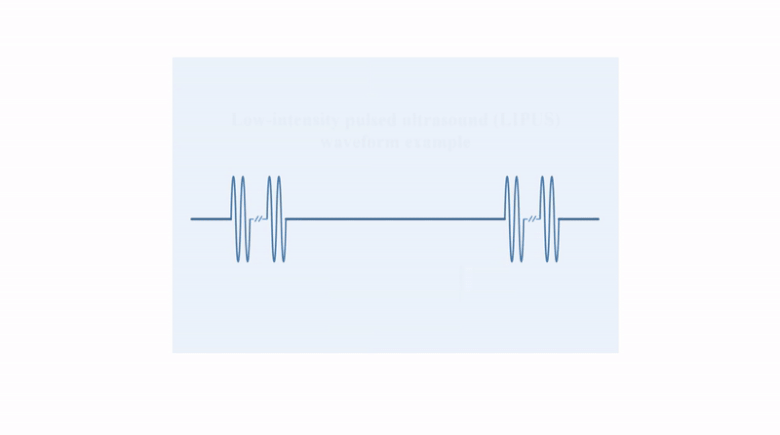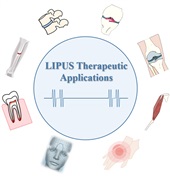
Ultrasound therapy has a long history of novel applications in medicine. Compared to high-intensity ultrasound used for tissue heating, low-intensity ultrasound has drawn increasing attention recently due to its ability to induce therapeutic changes without significant biological temperature increase. Low-intensity pulsed ultrasound (LIPUS) is a specific type of ultrasound that delivers at a low intensity and outputs in the mode of pulsed waves. It has minimal thermal effects while maintaining the transmission of acoustic energy to the target tissue, which can provide non-invasive physical stimulation for therapeutic applications. LIPUS has been demonstrated to accelerate the healing of fresh fracture, nonunion and delayed union in both animal and clinical studies. The U.S. Food and Drug Administration approved the established dose (1.5 MHz; pulse 200 µs; delivered at 20% duty cycle; 30mW/cm2 spatial average temporal average; 20 minutes daily) for fracture healing and the treatment of established nonunion, in 1994 and 2000, respectively. The effectiveness of LIPUS for the applications of soft-tissue regeneration and inhibiting inflammatory responses has also been investigated experimentally. However, no established treatment protocol is universally accepted or used for these applications. For dental treatment, which involves both hard and soft tissues, beneficial effects were shown using LIPUS with the same parameters used in the clinical treatment for bone healing. More recently, LIPUS has been shown as a potential modality for neuromodulation. This finding relies mostly on preclinical studies: mostly in vitro and few in vivo. While the broad applications and the effectiveness of LIPUS attract a lot of attention to this therapy, a better homogeneity of studies, similar conducts, and generally more data are needed for qualitative analysis to estimate the average positive effects and define the most effective doses for different applications.

